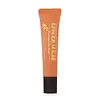What's inside
What's inside
 Key Ingredients
Key Ingredients

 Benefits
Benefits

 Concerns
Concerns

 Ingredients Side-by-side
Ingredients Side-by-side

Diisostearyl Malate
EmollientPolybutene
Phytosteryl/Isostearyl/Cetyl/Stearyl/Behenyl Dimer Dilinoleate
Skin ConditioningPhytosteryl Isostearyl Dimer Dilinoleate
EmollientHydrogenated Polyisobutene
EmollientDextrin Palmitate/Ethylhexanoate
EmulsifyingButyrospermum Parkii Butter
Skin ConditioningGlycerin
HumectantTocopheryl Acetate
AntioxidantAstrocaryum Murumuru Seed Butter
EmollientTriethylhexanoin
MaskingEthylene/Propylene/Styrene Copolymer
Euphorbia Cerifera Wax
Dimethicone
EmollientParfum
MaskingCaprylic/Capric Triglyceride
MaskingSucrose Tetrastearate Triacetate
EmollientHelianthus Annuus Seed Wax
Skin ConditioningOzokerite
Emulsion StabilisingSynthetic Wax
AbrasivePolyglyceryl-2 Dipolyhydroxystearate
Skin ConditioningPolyhydroxystearic Acid
EmulsifyingDisteardimonium Hectorite
StabilisingLecithin
EmollientSorbitan Isostearate
EmulsifyingEthylhexyl Palmitate
EmollientIsostearic Acid
CleansingIsopropyl Myristate
EmollientDehydroacetic Acid
PreservativePolyglyceryl-3 Polyricinoleate
EmulsifyingButylene/Ethylene/Styrene Copolymer
Pentaerythrityl Tetra-Di-T-Butyl Hydroxyhydrocinnamate
AntioxidantErythritol
HumectantWater
Skin ConditioningButylene Glycol
HumectantZingiber Officinale Root Extract
MaskingDiisostearyl Malate, Polybutene, Phytosteryl/Isostearyl/Cetyl/Stearyl/Behenyl Dimer Dilinoleate, Phytosteryl Isostearyl Dimer Dilinoleate, Hydrogenated Polyisobutene, Dextrin Palmitate/Ethylhexanoate, Butyrospermum Parkii Butter, Glycerin, Tocopheryl Acetate, Astrocaryum Murumuru Seed Butter, Triethylhexanoin, Ethylene/Propylene/Styrene Copolymer, Euphorbia Cerifera Wax, Dimethicone, Parfum, Caprylic/Capric Triglyceride, Sucrose Tetrastearate Triacetate, Helianthus Annuus Seed Wax, Ozokerite, Synthetic Wax, Polyglyceryl-2 Dipolyhydroxystearate, Polyhydroxystearic Acid, Disteardimonium Hectorite, Lecithin, Sorbitan Isostearate, Ethylhexyl Palmitate, Isostearic Acid, Isopropyl Myristate, Dehydroacetic Acid, Polyglyceryl-3 Polyricinoleate, Butylene/Ethylene/Styrene Copolymer, Pentaerythrityl Tetra-Di-T-Butyl Hydroxyhydrocinnamate, Erythritol, Water, Butylene Glycol, Zingiber Officinale Root Extract
Paraffinum Liquidum
EmollientHydrogenated Polyisobutene
EmollientCaprylic/Capric Triglyceride
MaskingDiisostearyl Malate
EmollientButylene/Ethylene/Styrene Copolymer
Ethylene/Propylene/Styrene Copolymer
Tocopheryl Acetate
AntioxidantCitrus Limon Peel Oil
MaskingCitrus Aurantium Dulcis Peel Oil
MaskingCitrus Aurantifolia Oil
CleansingCitrus Aurantium Bergamia Fruit Oil
MaskingCitrus Nobilis Peel Oil
MaskingMenthol
MaskingMenthyl Lactate
MaskingVanillyl Butyl Ether
MaskingMentha Viridis Leaf Oil
AstringentWater
Skin ConditioningVitis Vinifera Fruit Extract
Skin ConditioningHoney Extract
HumectantButylene Glycol
Humectant1,2-Hexanediol
Skin ConditioningPropolis Extract
Skin ConditioningRoyal Jelly Extract
Skin ConditioningPhenoxyethanol
PreservativeCI 45380
Cosmetic ColorantParfum
MaskingParaffinum Liquidum, Hydrogenated Polyisobutene, Caprylic/Capric Triglyceride, Diisostearyl Malate, Butylene/Ethylene/Styrene Copolymer, Ethylene/Propylene/Styrene Copolymer, Tocopheryl Acetate, Citrus Limon Peel Oil, Citrus Aurantium Dulcis Peel Oil, Citrus Aurantifolia Oil, Citrus Aurantium Bergamia Fruit Oil, Citrus Nobilis Peel Oil, Menthol, Menthyl Lactate, Vanillyl Butyl Ether, Mentha Viridis Leaf Oil, Water, Vitis Vinifera Fruit Extract, Honey Extract, Butylene Glycol, 1,2-Hexanediol, Propolis Extract, Royal Jelly Extract, Phenoxyethanol, CI 45380, Parfum
Ingredients Explained
These ingredients are found in both products.
Ingredients higher up in an ingredient list are typically present in a larger amount.
Butylene Glycol (or BG) is used within cosmetic products for a few different reasons:
Overall, Butylene Glycol is a safe and well-rounded ingredient that works well with other ingredients.
Though this ingredient works well with most skin types, some people with sensitive skin may experience a reaction such as allergic rashes, closed comedones, or itchiness.
Learn more about Butylene GlycolWe don't have a description for Butylene/Ethylene/Styrene Copolymer yet.
This ingredient is an emollient, solvent, and texture enhancer. It is considered a skin-softener by helping the skin prevent moisture loss.
It helps thicken a product's formula and makes it easier to spread by dissolving clumping compounds.
Caprylic Triglyceride is made by combining glycerin with coconut oil, forming a clear liquid.
While there is an assumption Caprylic Triglyceride can clog pores due to it being derived from coconut oil, there is no research supporting this.
Learn more about Caprylic/Capric TriglycerideDiisostearyl Malate is an emollient and most often used in lip products. It comes from isostearyl alcohol, a fatty acid, and malic acid, an AHA.
As an emollient, Diisostearyl Malate helps create a thin film on your skin to trap moisture in. This helps keep your skin soft and smooth.
We don't have a description for Ethylene/Propylene/Styrene Copolymer yet.
Hydrogenated Polyisobutene is a synthetic polymer. Polymers are compounds with high molecular weight. Hydrogenated Polyisobutene is an emollient and texture enhancer.
In one study, Hydrogenated Polyisobutene showed better skin hydration levels than Caprylic/Capric Triglyceride. As an emollient, it helps keep your skin soft and hydrated by trapping moisture in.
Hydrogenated Polyisobutene is often used as a mineral oil replacement.
Learn more about Hydrogenated PolyisobuteneParfum is a catch-all term for an ingredient or more that is used to give a scent to products.
Also called "fragrance", this ingredient can be a blend of hundreds of chemicals or plant oils. This means every product with "fragrance" or "parfum" in the ingredients list is a different mixture.
For instance, Habanolide is a proprietary trade name for a specific aroma chemical. When used as a fragrance ingredient in cosmetics, most aroma chemicals fall under the broad labeling category of “FRAGRANCE” or “PARFUM” according to EU and US regulations.
The term 'parfum' or 'fragrance' is not regulated in many countries. In many cases, it is up to the brand to define this term.
For instance, many brands choose to label themselves as "fragrance-free" because they are not using synthetic fragrances. However, their products may still contain ingredients such as essential oils that are considered a fragrance by INCI standards.
One example is Calendula flower extract. Calendula is an essential oil that still imparts a scent or 'fragrance'.
Depending on the blend, the ingredients in the mixture can cause allergies and sensitivities on the skin. Some ingredients that are known EU allergens include linalool and citronellol.
Parfum can also be used to mask or cover an unpleasant scent.
The bottom line is: not all fragrances/parfum/ingredients are created equally. If you are worried about fragrances, we recommend taking a closer look at an ingredient. And of course, we always recommend speaking with a professional.
Learn more about ParfumTocopheryl Acetate is AKA Vitamin E. It is an antioxidant and protects your skin from free radicals. Free radicals damage the skin by breaking down collagen.
One study found using Tocopheryl Acetate with Vitamin C decreased the number of sunburned cells.
Tocopheryl Acetate is commonly found in both skincare and dietary supplements.
Learn more about Tocopheryl AcetateWater. It's the most common cosmetic ingredient of all. You'll usually see it at the top of ingredient lists, meaning that it makes up the largest part of the product.
So why is it so popular? Water most often acts as a solvent - this means that it helps dissolve other ingredients into the formulation.
You'll also recognize water as that liquid we all need to stay alive. If you see this, drink a glass of water. Stay hydrated!
Learn more about Water